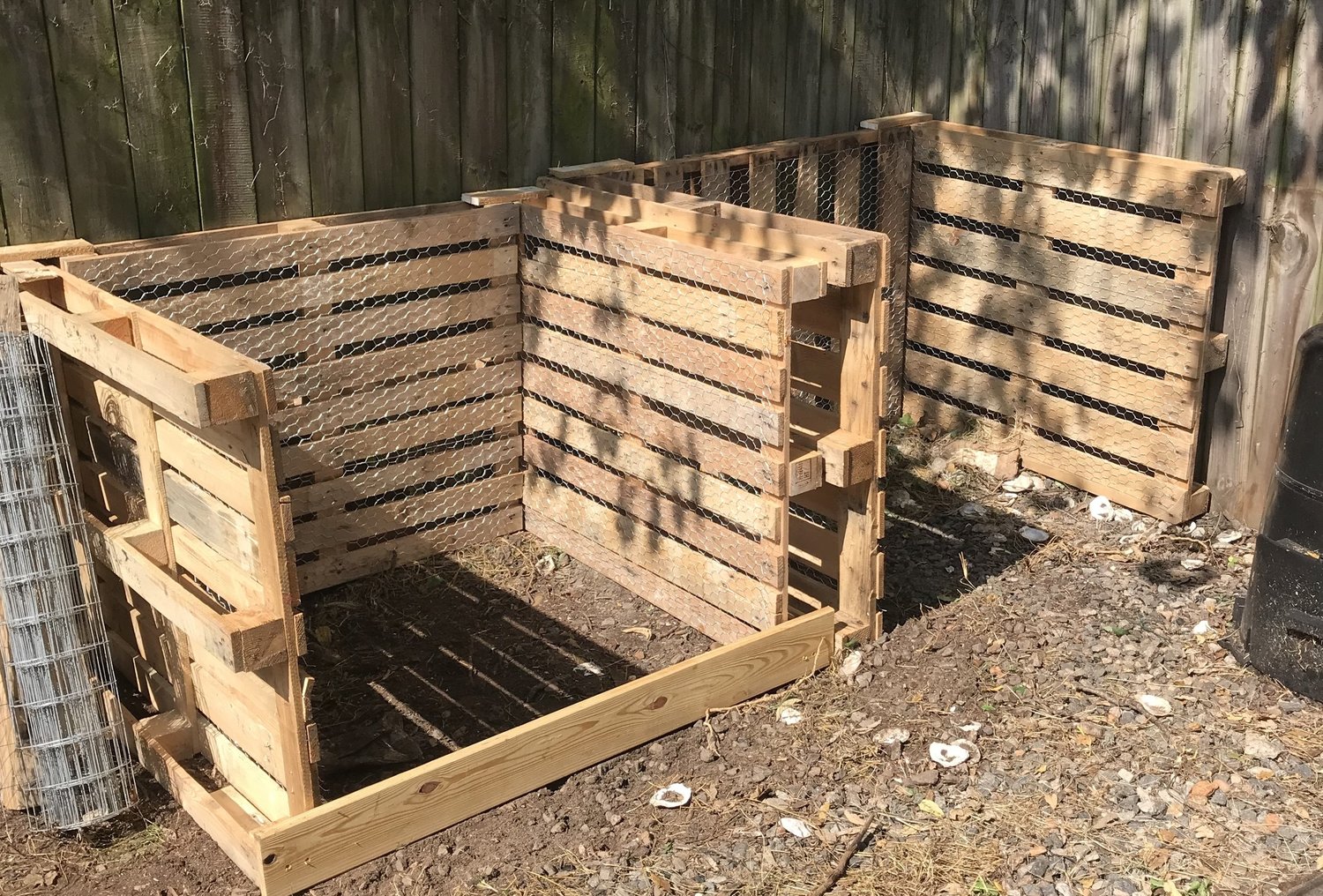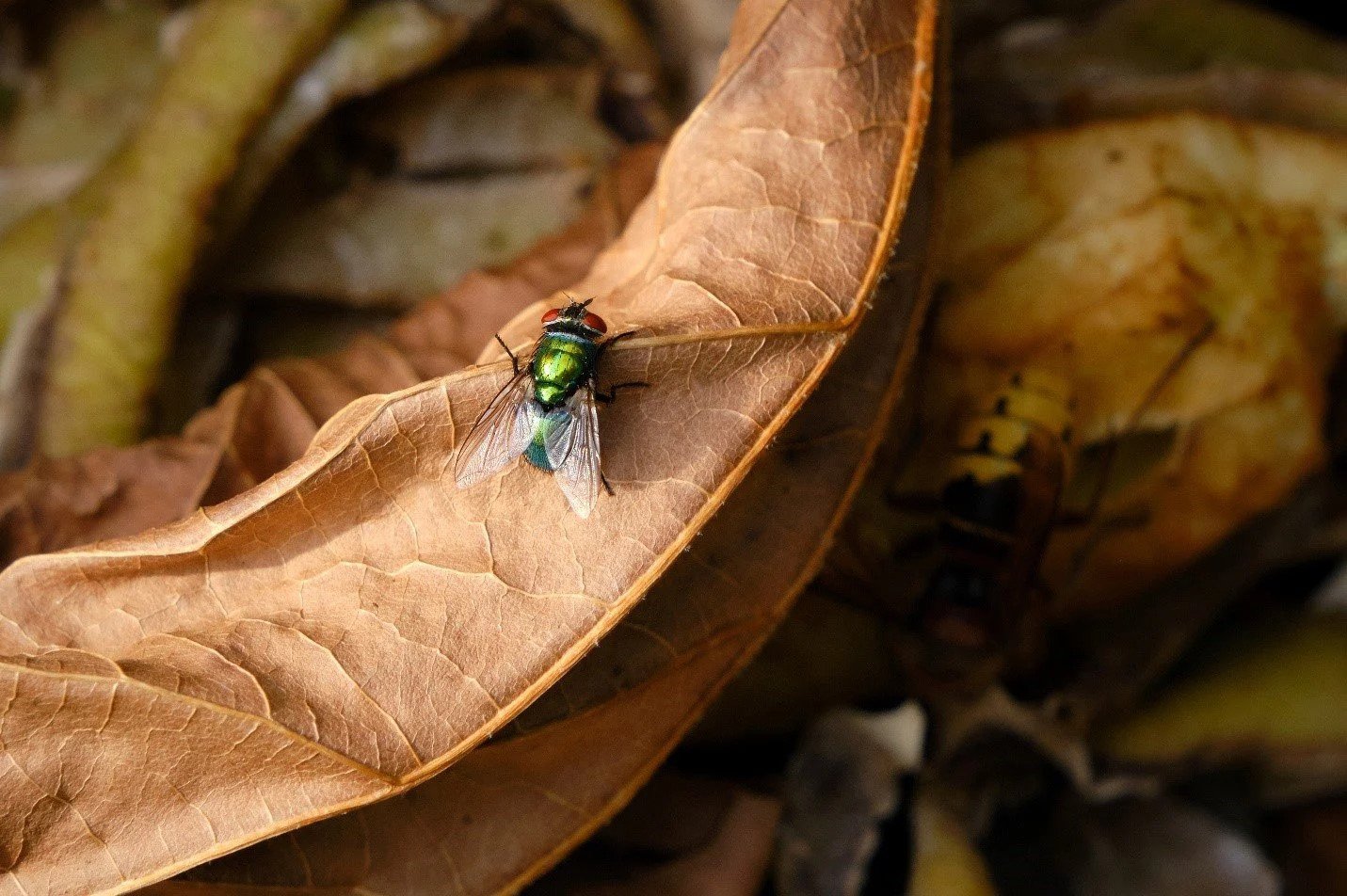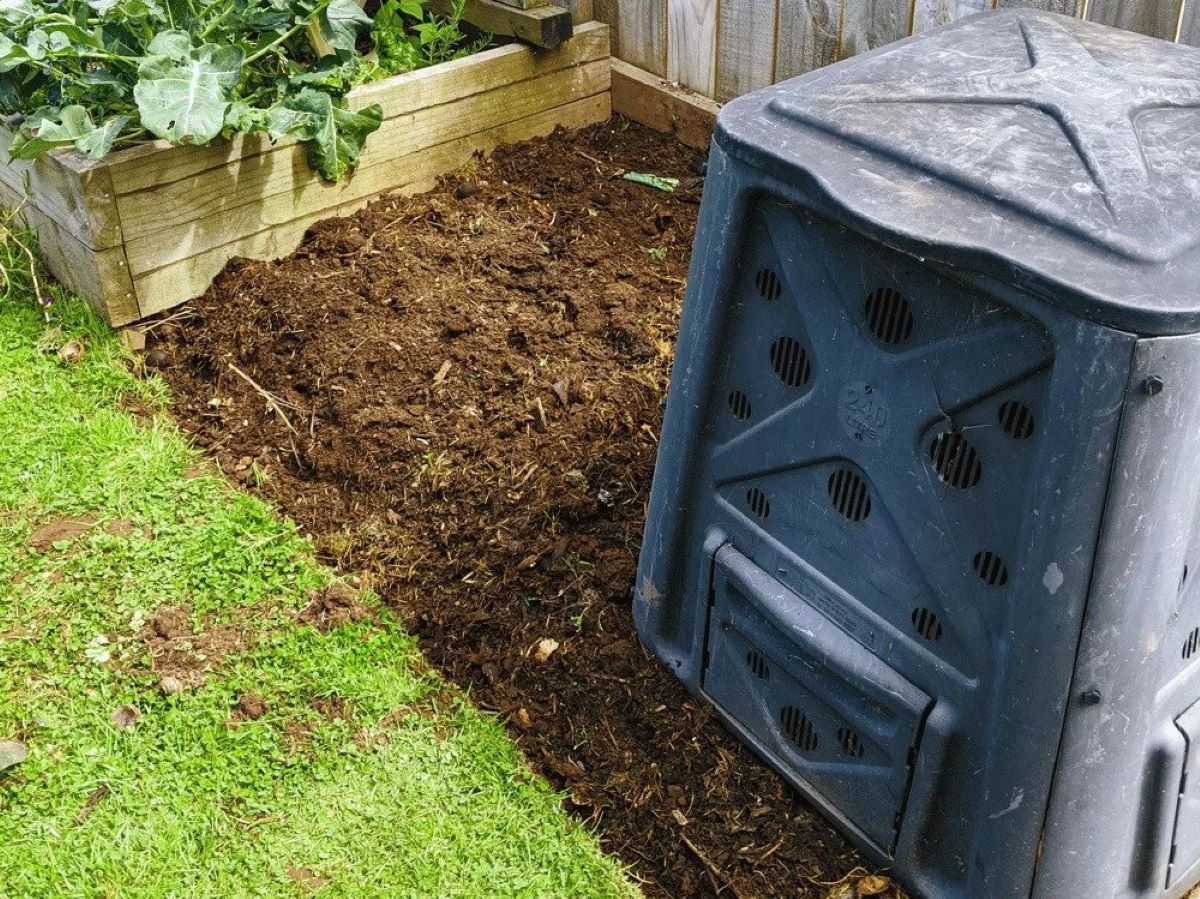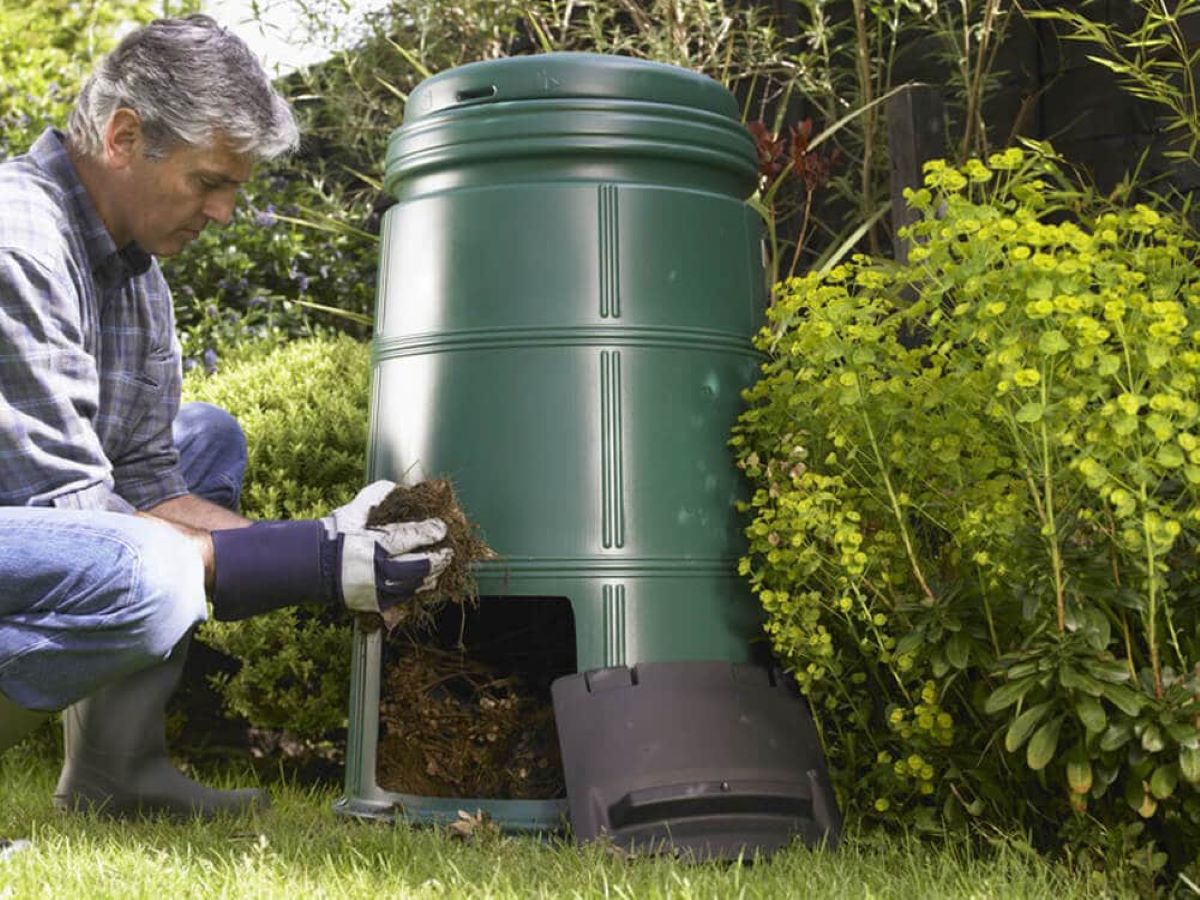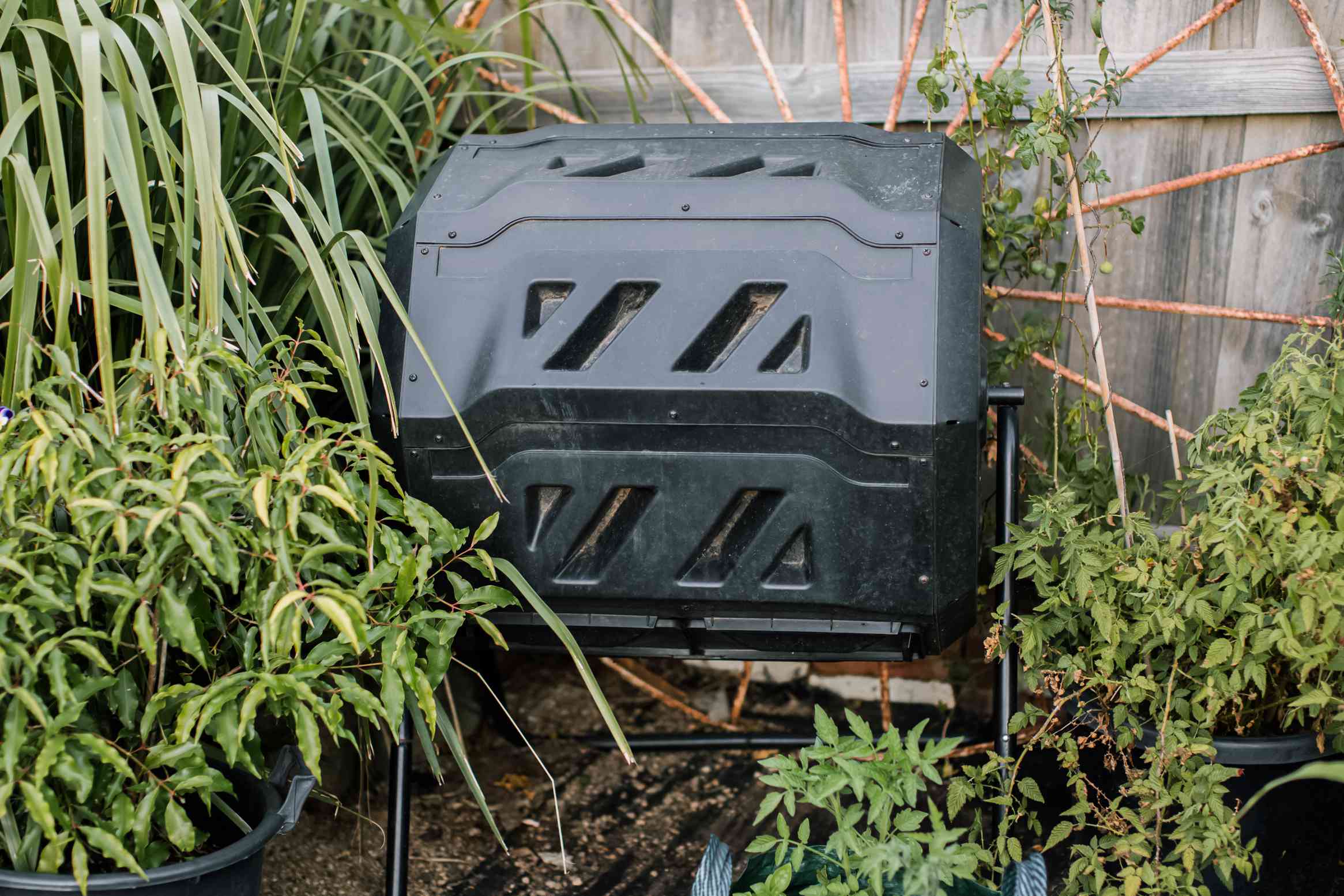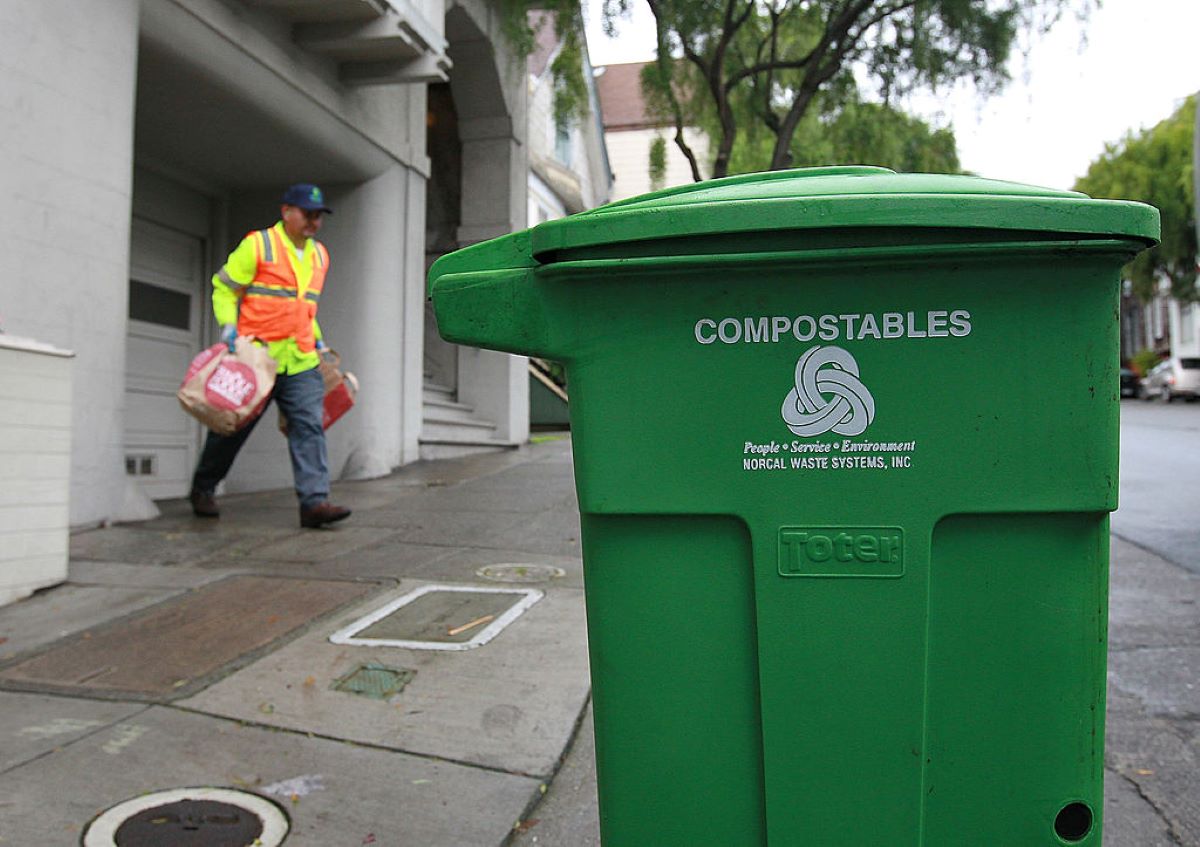Home>Gardening Tips and Tricks>Eco-Friendly Gardening>How To Compost Bin


Eco-Friendly Gardening
How To Compost Bin
Modified: January 22, 2024
Discover the benefits of eco-friendly gardening with a compost bin. Learn how to start composting and reduce waste for a more sustainable garden.
(Many of the links in this article redirect to a specific reviewed product. Your purchase of these products through affiliate links helps to generate commission for Chicagolandgardening.com, at no extra cost. Learn more)
Table of Contents
Introduction
Welcome to the world of eco-friendly gardening! One of the key principles of sustainable gardening is to minimize waste and make use of natural resources. And what better way to achieve this than through composting? Composting is the process of breaking down organic materials, such as kitchen scraps and yard waste, into nutrient-rich compost that can be used to nourish your plants and improve soil health.
In this article, we will guide you through the ins and outs of composting, specifically focusing on compost bins. Compost bins are containers specifically designed to hold and accelerate the decomposition process of organic matter. They come in various shapes and sizes, allowing you to choose the one that best suits your needs and available space.
By composting at home, you not only reduce the amount of waste that goes to landfills but also create a valuable resource that can enrich your garden and promote a healthier environment. So let’s dive into the benefits of composting and learn how to choose and set up your own compost bin.
Benefits of Composting
Composting offers a multitude of benefits for both the environment and your garden. Here are some of the key advantages:
- Reduces landfill waste: When organic materials are sent to landfills, they break down anaerobically, producing methane, a potent greenhouse gas. By composting, you divert these materials from the landfill and minimize methane emissions.
- Improves soil health: Compost is a nutrient-rich organic matter that enhances soil structure, improves water retention, and promotes beneficial microbial activity. It provides essential nutrients, such as nitrogen, phosphorus, and potassium, which nourish your plants and support their growth.
- Enriches your garden: When you incorporate compost into your garden soil, you enhance its fertility and overall health. It adds essential organic matter, increases nutrient availability, and improves soil structure, leading to better plant growth, stronger root development, and increased resilience to pests and diseases.
- Reduces the need for synthetic fertilizers: Compost is a natural fertilizer that slowly releases nutrients to plants over time. By using compost in your garden, you can reduce or eliminate the need for synthetic fertilizers, which can have negative impacts on water quality and soil health.
- Encourages beneficial organisms: Compost supports a diverse ecosystem of beneficial organisms, including earthworms, beneficial bacteria, and fungi. These organisms help break down organic matter, improve soil structure, prevent soil erosion, and suppress harmful pathogens.
- Conserves water: Compost improves soil’s water-holding capacity, reducing the need for frequent watering. It helps to retain moisture in the soil, allowing plants to access water more efficiently and reducing water runoff and wastage.
By composting, you actively participate in sustainable gardening practices and contribute to the preservation of our planet’s precious resources. Not only does it reduce waste and improve soil health, but it also allows you to create a closed-loop system where organic materials are recycled and used to benefit your garden.
Choosing a Composting Bin
When it comes to choosing a composting bin, several factors need to be considered, including the available space, your needs and preferences, and the type of composting system you want to implement. Here are some key considerations to keep in mind:
- Size: Consider the volume of organic waste you generate and the space available for a compost bin. If you have a small garden or limited space, opt for a compact bin or a compost tumbler that requires less room. On the other hand, if you have ample space and generate a significant amount of waste, a larger bin or even an open pile might be more suitable.
- Style: Composting bins come in various styles, including enclosed bins, open bins, and compost tumblers. Each style has its own advantages and considerations. Enclosed bins provide better control over moisture and temperature, minimize pest access, and create a neater appearance. Open bins are simpler and allow for easy turning of the compost. Compost tumblers are ideal for small spaces and make turning the compost easier.
- Aeration and drainage: Good airflow and drainage are crucial for composting. Look for bins with adequate ventilation or designs that promote airflow, such as holes or slots. Ensure that the bin allows excess moisture to drain out to prevent the compost from becoming too wet and anaerobic.
- Material: Composting bins are typically made of plastic, wood, or metal. Plastic bins are lightweight, affordable, and resistant to moisture and pests. Wooden bins are aesthetically pleasing, allow for better breathability, but may require regular maintenance. Metal bins are strong and durable but may be more expensive. Consider the material’s durability, weather resistance, and long-term maintenance requirements.
- Accessibility: Consider how easily you can access and manage the compost bin. Some bins have multiple access points or removable panels that allow for convenient removal of finished compost. Accessibility is especially important if you plan to regularly turn or monitor the composting process.
- Cost: Compost bins vary in price depending on their size, material, and features. Set a budget and choose a bin that offers good value for money while meeting your specific needs.
Remember, there is no one-size-fits-all solution when it comes to composting bins. Consider your specific requirements and constraints to make an informed decision. Whether you opt for a commercial bin, DIY solution, or repurposed materials, the goal is to find a bin that suits your needs and helps you efficiently manage your organic waste.
Setting Up Your Compost Bin
Once you’ve chosen the perfect composting bin, it’s time to set it up and get started. Here’s a step-by-step guide to help you set up your compost bin:
- Choose a suitable location: Place your compost bin in a convenient and accessible spot in your garden. Ideally, it should be located on level ground with good drainage and adequate sunlight. Make sure it’s not too far from your kitchen for easy disposal of food scraps.
- Prepare the site: Clear the area of any debris, rocks, or weeds. This will create a clean space for your compost bin and prevent any unwanted materials from contaminating the compost.
- Add a layer of brown materials: Start by adding a layer of brown materials, such as dry leaves, straw, or shredded newspaper, to the bottom of the bin. This layer acts as a carbon-rich base and helps create airflow within the pile.
- Add green materials: Layer green materials, such as kitchen scraps, grass clippings, or fresh plant trimmings, on top of the brown layer. Green materials provide nitrogen, which is essential for the decomposition process.
- Alternate layers: Continue layering brown and green materials in equal proportions, ensuring a ratio of roughly 3 parts brown to 1 part green. This balance of carbon and nitrogen ensures proper decomposition and helps prevent odors or pests.
- Moisten the pile: As you layer the materials, moisten the pile with water until it feels as damp as a wrung-out sponge. Moisture is important for the breakdown of organic matter and the activity of beneficial microorganisms.
- Mix or turn the compost: Depending on the type of compost bin you have, you may need to mix or turn the compost periodically to aid in the decomposition process. This helps distribute moisture and oxygen, ensuring even breakdown of materials.
- Cover the bin: To retain moisture and heat and prevent pests from accessing the pile, cover the compost bin with a lid or a layer of burlap or plastic sheeting.
With these simple steps, your compost bin will be set up and ready to transform your kitchen and garden waste into nutrient-rich compost. Remember to continue adding organic materials and turning the pile regularly to encourage decomposition. Before you know it, you’ll have a batch of dark, crumbly compost ready to nourish your garden plants and improve your soil’s fertility.
Composting Materials
Composting requires a careful balance of different organic materials to promote efficient decomposition and nutrient-rich compost. Here are some common materials that you can compost:
- Brown materials: These carbon-rich materials provide structure to the compost and help absorb excess moisture. Some examples include dried leaves, straw, shredded newspaper, cardboard, and wood chips. Make sure to shred or chop larger materials into smaller pieces to accelerate the decomposition process.
- Green materials: These nitrogen-rich materials provide essential nutrients for the decomposition process. Examples include kitchen scraps like fruit and vegetable peels, coffee grounds, tea bags, fresh grass clippings, and plant trimmings. Chop larger pieces into smaller fragments to speed up decomposition.
- Eggshells: Crushed eggshells are a valuable addition to the compost pile as they add calcium, a nutrient important for plant growth. Rinse and dry the eggshells before adding them to the compost to prevent any odors or pests.
- Manure: Animal manure, such as cow, horse, or poultry manure, provides nitrogen and other valuable nutrients for the compost. However, it’s important to use well-aged or composted manure to avoid potential pathogens and excess nitrogen that can harm plants if added too fresh.
- Plant-based materials: Dry plant materials like hedge clippings, leaves, and woody stems can be shredded and added to the compost pile. Avoid using plants that have been treated with chemicals or sprayed with pesticides.
- Straw: Straw is an excellent carbon source that helps maintain airflow and moisture balance in the compost. It’s ideal for layering with kitchen scraps and other green materials. Avoid using straw that has been sprayed with herbicides.
- Coffee grounds: Coffee grounds are rich in nitrogen and are a great addition to the compost pile. They can be added directly, but it’s best to mix them with other materials to avoid clumping and encourage even decomposition.
- Fruit and vegetable scraps: Most fruit and vegetable scraps can be composted, including peels, cores, and rinds. However, avoid adding citrus peels in large quantities as they can be slow to decompose and may attract pests.
Remember to avoid adding meat, dairy products, oily or fatty foods, and pet waste to your compost pile, as these can attract pests and create odor problems. It’s also important to maintain a good balance between brown and green materials to ensure proper decomposition and prevent any unpleasant smells.
By utilizing a variety of composting materials, you can create a nutrient-rich compost that will help nourish your plants, improve soil structure, and promote a sustainable and eco-friendly gardening practice.
Maintaining Your Compost Bin
Maintaining your compost bin is essential to ensure optimal decomposition and nutrient-rich compost production. Here are some key tips for keeping your compost bin in good working condition:
- Monitor moisture levels: Compost needs to be moist, but not waterlogged. Check the moisture level regularly by squeezing a handful of compost. It should feel moist, like a sponge, but not dripping wet. If it’s too dry, add water; if it’s too wet, add more brown materials to absorb the excess moisture.
- Turn or mix the compost: Turning or mixing the compost helps incorporate oxygen and speed up decomposition. Use a garden fork or a compost turning tool to regularly turn the compost pile. This will help distribute moisture, break down larger materials, and promote even decomposition.
- Add materials regularly: Keep adding organic materials to your compost bin to maintain a steady supply of nitrogen and carbon. Add a mix of green and brown materials in equal proportions, layering them as you go. This will help maintain the balance of nutrients and keep the decomposition process active.
- Avoid adding invasive or diseased plants: Be cautious about adding invasive weeds or plants that may have diseases to your compost bin. The high temperatures during composting may not kill the seeds or pathogens, potentially spreading them when you use the compost in your garden.
- Manage pests: To prevent pests from accessing your compost bin, avoid adding meat, dairy products, oily foods, and animal waste. If you notice pest activity, such as flies or rodents, cover the compost with a layer of brown materials or use a compost bin with a tightly sealed lid.
- Regularly check the temperature: A well-maintained compost pile will generate heat as it decomposes. Use a compost thermometer to periodically check the internal temperature. Ideally, it should be between 120°F and 160°F (49°C and 71°C). If the temperature is too low, add more green materials and turn the pile to activate the decomposition process.
- Patience: Composting takes time, and the process can vary depending on factors like temperature, materials used, and turning frequency. Be patient and allow the compost to break down completely before using it in your garden. The compost is ready when it has a dark, earthy smell and a crumbly texture.
By properly maintaining your compost bin, you will promote a healthy and efficient composting process. Regular monitoring, turning, and adding the right materials will lead to nutrient-rich compost that will benefit your plants and enhance your garden’s overall health.
Troubleshooting Common Issues
While composting is a straightforward process, you may encounter some common issues along the way. Here are some troubleshooting tips to help you address these challenges:
- Foul odors: If your compost has a strong, unpleasant smell, it is likely too wet or lacks enough oxygen. To remedy this, add more dry brown materials like leaves or shredded paper to absorb excess moisture and improve airflow. Turning the compost more frequently can also help aerate the pile and reduce odor.
- Slow decomposition: If your compost is taking longer than expected to decompose, it may be because of an improper balance between carbon-rich (brown) and nitrogen-rich (green) materials. Adjust the ratio of brown to green materials by adding more of the needed component. Also, ensure that the pile is adequately moist and turned regularly for proper decomposition.
- Pest infestation: Pest problems can arise if the compost pile contains food scraps that attract insects or rodents. To avoid pest infestations, make sure to bury food scraps beneath a layer of brown materials and avoid adding meat, dairy, or oily foods to the compost. Using a closed compost bin with a tightly sealed lid can also help keep pests out.
- Excessive heat or dryness: If your compost pile becomes too hot or dries out, it can interrupt the decomposition process. To cool down an overheating pile, add more brown materials, turn the pile more frequently, and ensure proper moisture levels. If the compost becomes too dry, water it thoroughly to restore the moisture balance.
- Weed seeds in compost: Sometimes, weed seeds can survive the composting process. To minimize the presence of weed seeds in your compost, avoid adding flowering weeds or weeds that have gone to seed. Additionally, ensure that the compost reaches high temperatures during the decomposition process, as this can help kill weed seeds and pathogens.
Keep in mind that composting is a natural process and may require some adjustments along the way. Experimentation and observation will help you troubleshoot specific issues and find solutions that work best for your composting system.
Remember, composting is a learning experience, and even experienced gardeners may encounter challenges from time to time. Don’t be discouraged if you face difficulties. By addressing them promptly and making necessary adjustments, you can overcome these common issues and continue on the path to successful composting.
Harvesting Compost from Your Bin
After patiently allowing your compost materials to break down and transform into nutrient-rich soil amendment, it’s time to harvest the finished compost from your bin. Here’s how you can do it:
- Stop adding new materials: Before harvesting the compost, stop adding new materials to the compost bin. This allows the remaining materials to fully decompose without any disruptions.
- Move or sift the compost: Depending on the type of compost bin you have, there are different methods to harvest the compost. If you have an open pile or a wire bin, you can start by transferring the top layer of unfinished compost to a separate area. This will expose the well-decomposed material at the bottom. If you have an enclosed bin or a compost tumbler, you can simply rotate or turn it to gather the finished compost.
- Sift the compost (optional): If you desire a finer texture, you can sift the compost to remove any larger materials that have not fully broken down. Use a sturdy mesh screen or homemade sifter to separate the finished compost from the uncomposted materials. The larger materials can be returned to the compost bin to continue decomposing.
- Store the finished compost: Once you have harvested the finished compost, store it in a dry and covered container, such as a plastic bin or breathable bag. This will help preserve its moisture content and prevent it from drying out.
It’s important to note that not all the compost in your bin needs to be harvested at once. You can selectively remove the finished compost as needed while allowing the remaining materials to continue decomposing. This way, you can maintain a continuous supply of fresh compost for your garden throughout the year.
The harvested compost can be used as a soil amendment for your garden beds, potted plants, or even lawn. Spread a thin layer of the compost over the soil surface and gently work it into the top few inches. This will nourish the soil, improve its structure, and provide the plants with essential nutrients.
Remember, the quality of your compost will greatly depend on the materials used and the management of the composting process. With regular turning, proper moisture levels, and patience, you’ll be rewarded with rich, dark compost that will help you grow healthier plants and promote sustainable gardening practices.
Using Compost in Your Garden
Compost is a valuable resource that can greatly benefit your garden by improving soil health, enhancing plant growth, and reducing the need for synthetic fertilizers. Here are some ways you can use compost in your garden:
- Amending garden soil: Mix compost with your existing garden soil to enhance its fertility and structure. Spread a layer of compost and gently work it into the top few inches of soil. This will increase nutrient availability, improve water retention, and promote beneficial microbial activity.
- Top-dressing for plants: Apply a layer of compost around the base of plants, also known as top-dressing. This helps retain moisture, suppress weed growth, and slowly release nutrients to the plants throughout the growing season. Avoid placing the compost too close to the plant stems to prevent rotting.
- Creating potting mixes: Mix compost with other organic materials like peat moss, vermiculite, or perlite to create a nutrient-rich potting mix for container gardening. This will provide essential nutrients to potted plants and improve water retention in the containers.
- Making compost tea: Steep a handful of compost in a bucket of water for a few days to create compost tea. This nutrient-rich liquid can be used as a foliar spray or soil drench to nourish plants and boost their growth.
- Building raised beds or new garden areas: Incorporate compost into the soil when building new raised beds or starting a garden in a new area. This will improve soil fertility and structure right from the start, providing an optimal growing environment for your plants.
- Renovating lawns: When renovating or seeding a lawn, spread a thin layer of compost over the area before seeding. This will improve the soil’s ability to retain moisture, encourage better seed establishment, and enhance overall lawn health.
- Mulching: Use compost as a mulch by spreading a layer around plants, shrubs, and trees. This helps regulate soil temperature, reduce weed growth, and retain moisture, while also slowly releasing nutrients to the underlying soil.
Remember to use compost as a supplement to, not a replacement for, good gardening practices. It should be viewed as a soil amendment and conditioner rather than a complete fertilizer. Regularly incorporating compost into your garden will improve soil health over time, resulting in healthier plants, increased yields, and a more resilient garden ecosystem.
Whether you are growing vegetables, herbs, flowers, or ornamental plants, incorporating compost into your garden will undoubtedly provide numerous benefits. It’s an environmentally friendly and sustainable way to nurture your garden and contribute to the overall health of the soil ecosystem.
Conclusion
Embarking on the journey of eco-friendly gardening through composting is a rewarding and sustainable practice. By choosing and setting up a compost bin, you can minimize waste, improve soil health, and create nutrient-rich compost to nourish your garden. Composting offers a host of benefits, including reducing landfill waste, enriching soil fertility, conserving water, and promoting a healthy garden ecosystem.
When selecting a composting bin, consider factors like size, style, aeration, and accessibility to find the best fit for your needs. Setting up the bin with a proper layering of brown and green materials, regular turning, and maintaining optimal moisture levels will help ensure successful decomposition and effective composting.
Throughout the process, it’s important to troubleshoot common issues that may arise, such as odors, slow decomposition, pest infestations, or excessive heat. By addressing these challenges promptly and making necessary adjustments, you can maintain a healthy and productive compost bin.
Once your compost has reached its desired level of decomposition, you can harvest it and incorporate it into your garden in various ways – amending soil, top-dressing plants, creating potting mixes, making compost tea, or building raised beds. The nutrient-rich compost will enhance soil fertility, promote plant growth, and reduce the need for synthetic fertilizers.
Composting is an ongoing learning process, and with each cycle, you will refine your techniques and deepen your understanding of this sustainable gardening practice. Experiment, observe, and adapt as you progress on your composting journey.
By embracing eco-friendly gardening through composting, you are not only reducing your environmental footprint, but also nurturing a healthier, more vibrant garden. So, roll up your sleeves, start composting, and witness the transformative power of turning organic waste into valuable compost that benefits both your garden and our planet.

